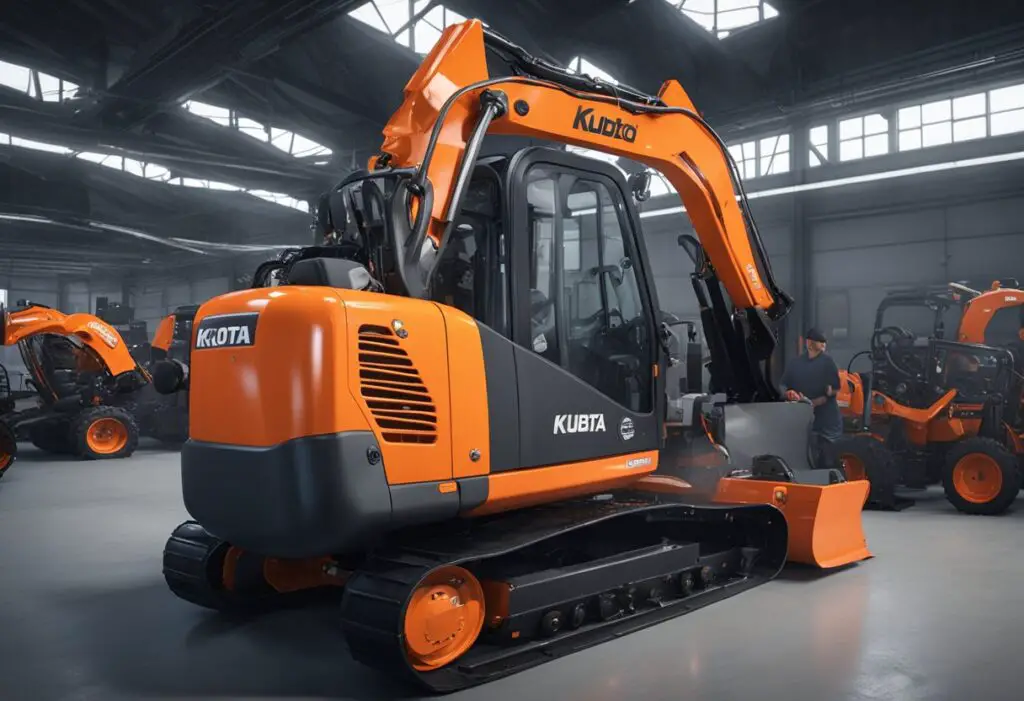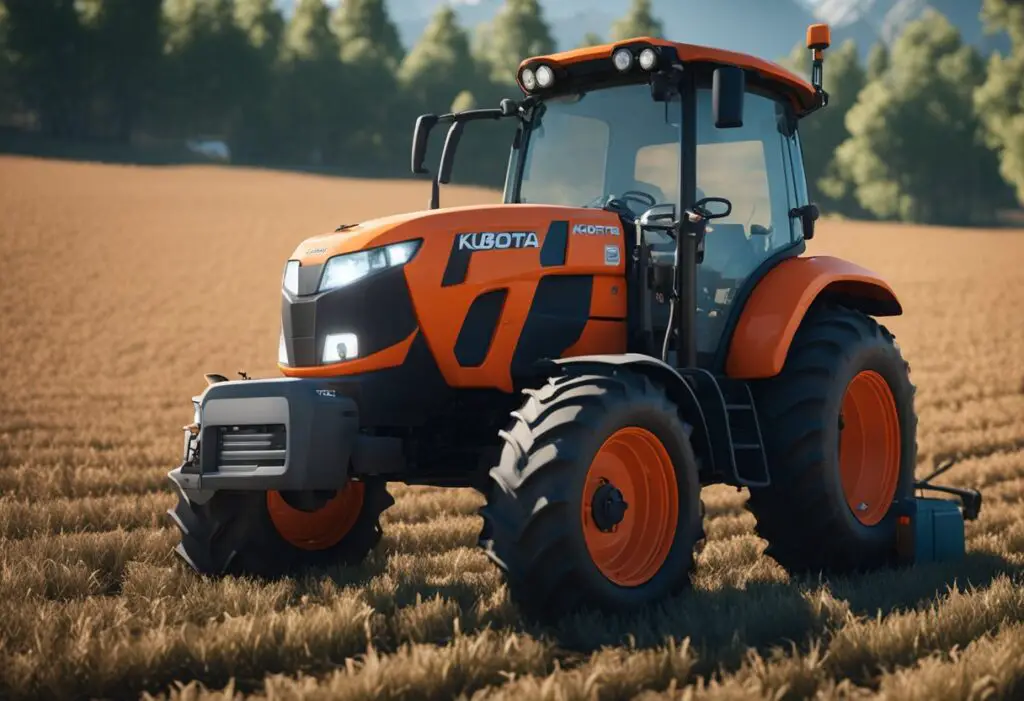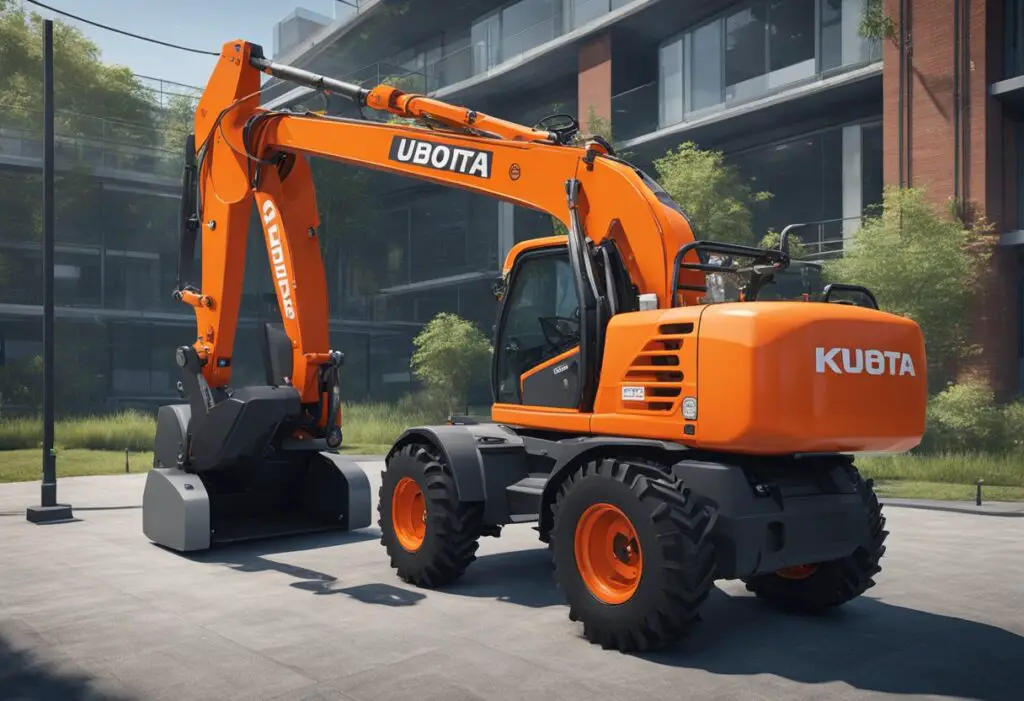Kubota tractors are renowned for their reliability and versatility in a range of tasks from agriculture to landscaping. At the heart of their performance lies the hydrostatic transmission system, which provides smooth and responsive power delivery. However, despite its advantages, this transmission system is not without its issues, and understanding those problems is key to maintaining your tractor’s longevity and efficiency.

Hydrostatic transmission problems in Kubota tractors can range from simple maintenance issues to more complex mechanical failures. Commonly encountered difficulties include loss of power, jerky operation, and transmission fluid leaks. Regular maintenance can prevent some of these issues, while others may require a more in-depth approach to troubleshoot and resolve. By being aware of the potential issues you may encounter and how to address them, you can ensure that your Kubota tractor remains a reliable workhorse for your operations.
Key Takeaways
- Regular maintenance can prevent common hydrostatic transmission problems.
- Understanding how to troubleshoot can save time and extend your tractor’s service life.
- Seeking professional help may be the best course of action for complex issues.
Understanding Hydrostatic Transmission
When dealing with the hydrostatic transmission (HST) in your Kubota tractor, it helps to know its intricacies. This knowledge can arm you with the power to maintain and troubleshoot issues effectively.
Components of Hydrostatic Transmission
Your Kubota’s HST system is composed of a few crucial parts. At its heart lies the hydrostatic pump and motor pair. These components work in tandem, relying on transmission fluid (often oil) to transfer power from the engine to the wheels or other machinery.
- Pump: Converts mechanical energy into fluid pressure.
- Motor: Converts the fluid pressure back into mechanical energy to drive the wheels.
- Transmission Fluid: Typically oil, this is the medium through which power is transferred. Make sure it’s at the recommended level.
- Gears and Valves: Govern the direction and speed of your tractor, allowing for smooth operation.
Working Principle of Hydrostat
At its core, a hydrostatic transmission functions on a simple principle. The pump sends oil under pressure to the motor. The amount of oil and the pressure at which it’s sent determine the speed and torque that you feel when you push the pedal.
- To move forward: Increase pressure sent to the motor.
- To reverse: Change the direction of oil flow.
Understanding the harmony between these elements is vital for keeping your tractor in peak condition. The hydrostat’s beauty lies in its ability to offer smooth, variable control, which means operational precision for you.
Common Kubota Transmission Problems
Your Kubota’s hydrostatic transmission is key to its performance, but problems like leaks, overheating, and power loss can arise, affecting your tractor’s operations.
Transmission Leaks
Transmission fluid leaks in your Kubota can lead to inadequate lubrication and potential damage. Common signs of leakage include visible puddles of fluid under your tractor or a drop in transmission fluid levels. Regularly inspect hoses and seals for wear and tear, replacing them as needed to prevent leaks from occurring.
Overheating Issues
Overheating is often caused by a lack of proper fluid circulation within the transmission or heavy workload that exceeds the tractor’s operating capacity. Keep an eye on the temperature gauge; if it goes higher than usual, it might be time to check the cooling system. A clean transmission fluid, free from contamination, is essential to prevent overheating and should be topped up or replaced according to the manufacturer’s guidelines.
Power Loss and Sluggish Performance
If you notice your Kubota feeling sluggish or suffering from power loss, the hydrostatic pump might be failing, or there might be issues like transmission slippage. Low hydraulic fluid levels or the use of incorrect fluid types can exacerbate this problem. Make sure to use the correct type of fluid and keep it at the recommended level to maintain desired performance levels.
Maintenance Tips for Kubota Hydrostatic Transmissions

Maintaining your Kubota hydrostatic transmission is key to ensuring long-term performance and reliability. Regular maintenance can prevent common issues like power loss and no movement, ensuring your tractor runs smoothly.
Checking Fluid Levels
Your Kubota tractor depends on the right level of hydraulic fluid to operate effectively. To check the oil level:
- Park your tractor on a level surface and turn off the engine.
- Find the transmission dipstick near the driver’s seat or under the hood.
- Remove the dipstick, wipe it clean, and reinsert it fully.
- Pull it out again to verify the fluid level, which should be within the recommended markers.
Replacing Filters and Belts
Over time, your Kubota’s filters and belts may wear out or get clogged, impacting performance.
Hydraulic Filters:
- Check and replace the hydraulic filters as per the maintenance schedule to avoid clogs that could affect transmission fluid pressure.
Belt Replacement:
- Inspect the drive belt condition regularly.
- Replace it if you find it frayed or damaged to prevent slip or loss of power transmission.
Regular Inspection Procedures
Routine inspections can catch small problems before they become bigger issues.
Hydraulic Fluid Levels:
- Monitor your tractor’s fluid levels before each use.
- Top off or change the fluid according to the owner’s manual specifications.
Air Filter:
- Keep the air filter clean to avoid dust entering the transmission system, which could cause wear or clogging.
Transmission Fluid:
- Check for the correct transmission fluid type. Using the wrong fluid can cause significant damage to the system.
- Look for signs of leaks, which may indicate a need for seal or hose repair.
By following these specific maintenance tips, your Kubota’s hydrostatic transmission should remain in top working condition, avoiding many of the common operational issues associated with improper maintenance. Remember to consult your Kubota’s manual for specific maintenance intervals and procedures to keep your machine running as intended.
Troubleshooting Kubota Transmission Issues

If you own a Kubota with a hydrostatic transmission and you’re experiencing problems, whether it’s strange noises, an unresponsive system, or hydraulic failure, the following troubleshooting tips can help diagnose and resolve these issues.
Identifying and Diagnosing Noises
When your Kubota starts making unusual noises, it’s a signal to inspect and diagnose. Listen carefully for:
- Whining or squealing, which may indicate low fluid levels or air entrapment.
- Grinding sounds that could suggest internal wear or failure.
How to inspect:
- Check the fluid level; it should be filled to the manufacturer’s recommended level.
- Look for signs of air bubbles in the fluid which can cause noise and lead to a slow response in the transmission.
Action steps:
- Top off with the correct type of fluid if levels are low.
- Purge the system to eliminate air if you detect air bubbles.
Dealing with Unresponsive Transmission
A slow or unresponsive hydrostatic transmission can be due to a few factors:
- Low fluid levels or poor fluid quality.
- Clogged filters or hydraulic lines.
Steps for a quick response:
- Ensure fluid levels are sufficient and the fluid is clean.
- Replace filters with genuine Kubota filters if they are dirty or clogged.
Quick fix:
- Purge the transmission system to remove any air that might be causing the sluggish performance.
Fixing Hydraulic System Failures
Hydraulic system failures often manifest through weak performance or a complete lack of power. For hydraulic issues:
- Inspect the hydrostatic pump for signs of wear or damage.
- Check for leaks in the hydraulic lines which could lead to system failures.
Inspection checklist:
- Pump condition: Look for external damage or leaks.
- Hydraulic lines: Ensure they are secure and undamaged.
Resolution steps:
- If the pump shows signs of failure, consider having it professionally serviced or replaced.
- Repair or replace any damaged hydraulic lines to ensure optimal performance.
Remember, regular maintenance and early detection of issues are key to keeping your Kubota’s hydrostatic transmission in good working order.
Preventive Measures and Best Practices

Implementing preventive measures and applying best practices are key strategies in maintaining the reliability and convenience of your Kubota’s hydrostatic transmission system. Regular attention to how you use and care for your tractor can prevent common issues.
Effective Use of Hydrostatic Drive
To maintain your hydrostatic drive’s integrity, monitor the transmission fluid regularly. Ensure the fluid level is within the recommended range, which is critical for smooth operation. Avoid overloading your tractor, as this can cause undue wear and compromise the transmission’s effectiveness.
- Check the transmission fluid levels according to the maintenance schedule.
- Inspect the quality of the transmission fluid; Look for discoloration or contamination.
- Do not exceed the recommended load capacity; overloading can lead to increased strain and accelerated wear.
Avoiding Common Operational Mistakes
Familiarize yourself with operational best practices to avoid errors that could harm your tractor’s hydrostatic system. By steering clear of certain mistakes, you will prolong the life of your transmission and ensure your tractor remains reliable.
- Be gentle with starts and stops; abrupt changes in speed can stress the hydraulic system.
- Avoid unnecessary strain by using the appropriate gear for your task.
- Be consistent with scheduled maintenance to preempt mechanical wear and tear.
By incorporating these practices, you’ll enhance the longevity and performance of your Kubota’s hydrostatic transmission.
When to Seek Professional Help
Dealing with Kubota hydrostatic transmission issues can be complex. When you encounter persistent problems or signs of serious damage, it’s important to consult with a professional to avoid costly engine damage and expensive repairs.

Recognizing Signs of Serious Damage
If you notice these indications, it’s time to seek professional help:
- Persistent Slipping or Jerking: When your tractor frequently slips out of gear or jerks unexpectedly, it points to internal issues that require a professional’s touch.
- Unusual Noises: Grinding or whining sounds from your transmission are often the cry for help from worn-out components.
- Fluid Leaks with Debris: A leak might just need a seal replacement, but if you see metallic particles in the fluid, this suggests internal damage.
Choosing the Right Repair Shop
When selecting a professional service, consider these factors:
- Certified Technicians: Look for a repair shop or dealership with certified technicians who specialize in Kubota machinery.
- Reputation: Do your research. Online reviews and word-of-mouth recommendations can guide you to a reputable service provider.
- Warranty Offers: Ask if they provide warranty on the repairs made. This is a sign of confidence in their work.
Bring your Kubota to a place where it will get the right attention, ensuring your tractor gets back to its efficient and productive state.
Frequently Asked Questions

Understanding Kubota hydrostatic transmission issues is key to maintaining your machine’s performance. Here are some answers to commonly asked questions to help you identify and solve transmission problems.
What are the typical symptoms of a faulty hydrostatic transmission?
If your Kubota hydrostatic transmission is failing, you may notice your tractor is sluggish or lacks power. You might also experience jerky movements or hear unusual noises when changing speeds.
How can you troubleshoot a hydrostatic transmission issue in a lawn tractor?
To troubleshoot issues, begin by checking the transmission fluid level and quality. Ensure that there are no leaks and the fluid is not contaminated. If issues persist, inspect the drive belt for proper tension and wear.
Can hydrostatic transmissions be adjusted, and if so, how?
Yes, hydrostatic transmissions can often be adjusted. Refer to your owner’s manual for specific adjustment procedures as they vary by model, typically involving linkage adjustments to correct speed and response.
What is a common lifespan for hydrostatic transmissions in heavy machinery?
The lifespan of a hydrostatic transmission often ranges anywhere from 7 to 10 years. However, this can be longer with proper maintenance and can vary depending on usage intensity and conditions.
What steps should be taken if a hydrostatic transmission starts slipping when hot?
When a hydrostatic transmission slips upon getting hot, it’s crucial to check and change the transmission fluid if needed. If this doesn’t resolve the issue, it may indicate internal wear or damage requiring professional service.
How can you tell if air has entered a hydrostatic transmission, and what are its effects?
If air has entered the system, you may experience a loss of power or erratic operation of your tractor. To remedy this, you need to bleed the air from the system following the recommended procedure in the service manual.
Leave a Reply